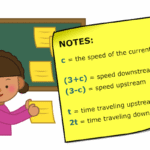All learners need Math Literacy because it is a priority 21st century skillset that includes the ability to comprehend, contextualize, and communicate mathematical information, problems, and thinking. Without this skillset, a learner may have difficulty with the following tasks:
- understanding what a math question is asking,
- understanding what information is needed to solve a problem,
- analyzing a worked example and offering a critique,
- communicating their solution steps or thought process, and
- connecting a math problem to a big-picture concept or to a real-life situation.
 Math Literacy skills are especially critical to support our multilingual and special needs learners. And, they are vital for equitable access to curricular resources. Think about it: In an AI-driven future, can any child afford to lack the ability to comprehend, contextualize, and communicate mathematical information?
Math Literacy skills are especially critical to support our multilingual and special needs learners. And, they are vital for equitable access to curricular resources. Think about it: In an AI-driven future, can any child afford to lack the ability to comprehend, contextualize, and communicate mathematical information?
How Language Supports Each Standard of Practice
According to the WIDA English Language Development Standards Framework, there are six communication modes. All of these modes have a place in mathematics:

The table below shows our analysis of which communication modes support each of the Standards for Mathematical Practice. To see the basis of this analysis, please view our detailed Guide to Language in the Math Practices.
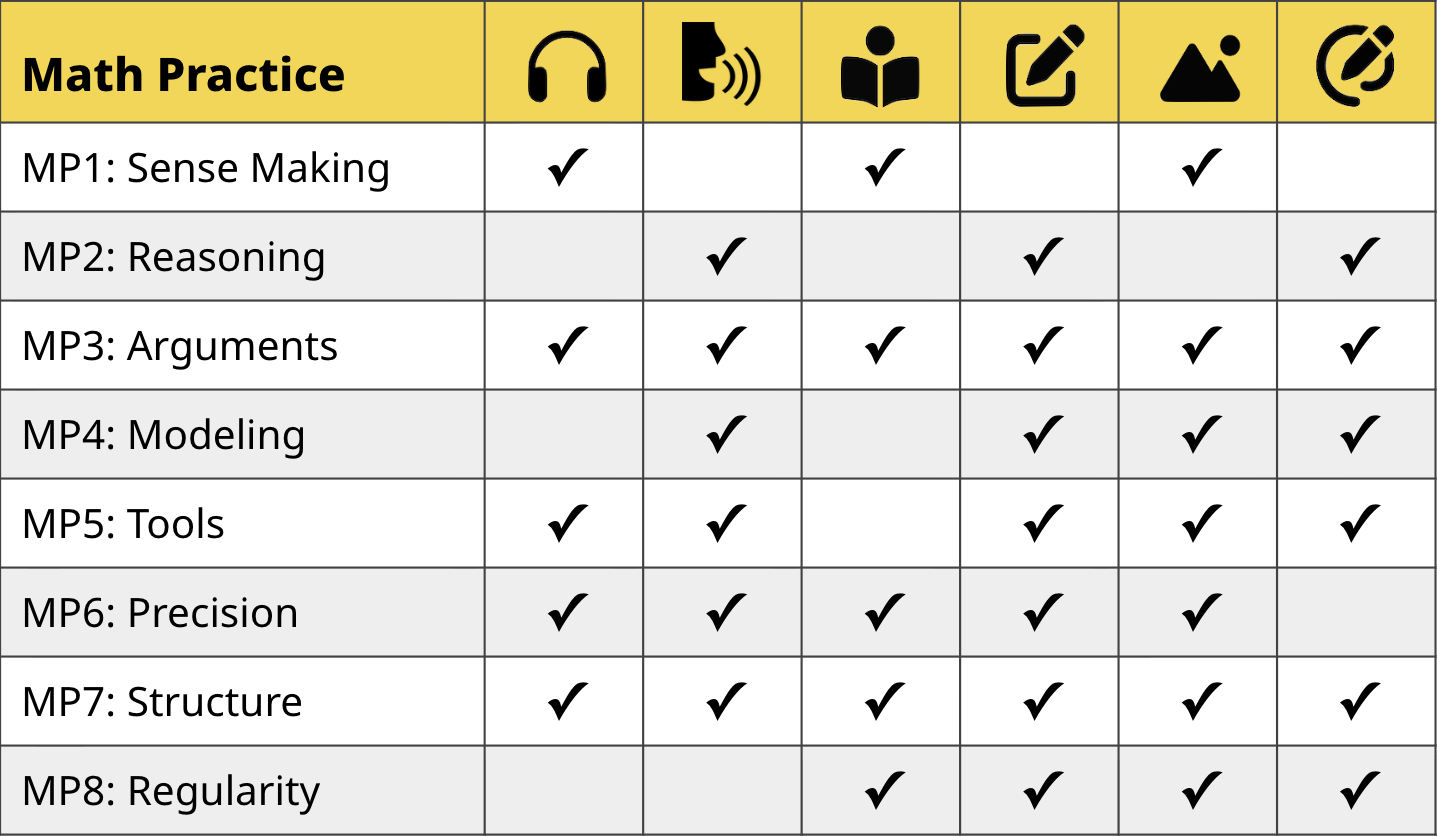
How Speak Agent Embeds Math Literacy
Below are several examples. To learn more, download our Guide to Language in the Math Practices.
MP2: Reason abstractly and quantitatively.
Speak Agent’s “Explain Your Work” math reasoning activity, shown in the image below, provides a series of scaffolds for writing math explanations. Learners start with gap-filled sentence frames and stems, compare against writing models, and then write their own step-by-step explanations with the help of a word bank of relevant academic vocabulary.
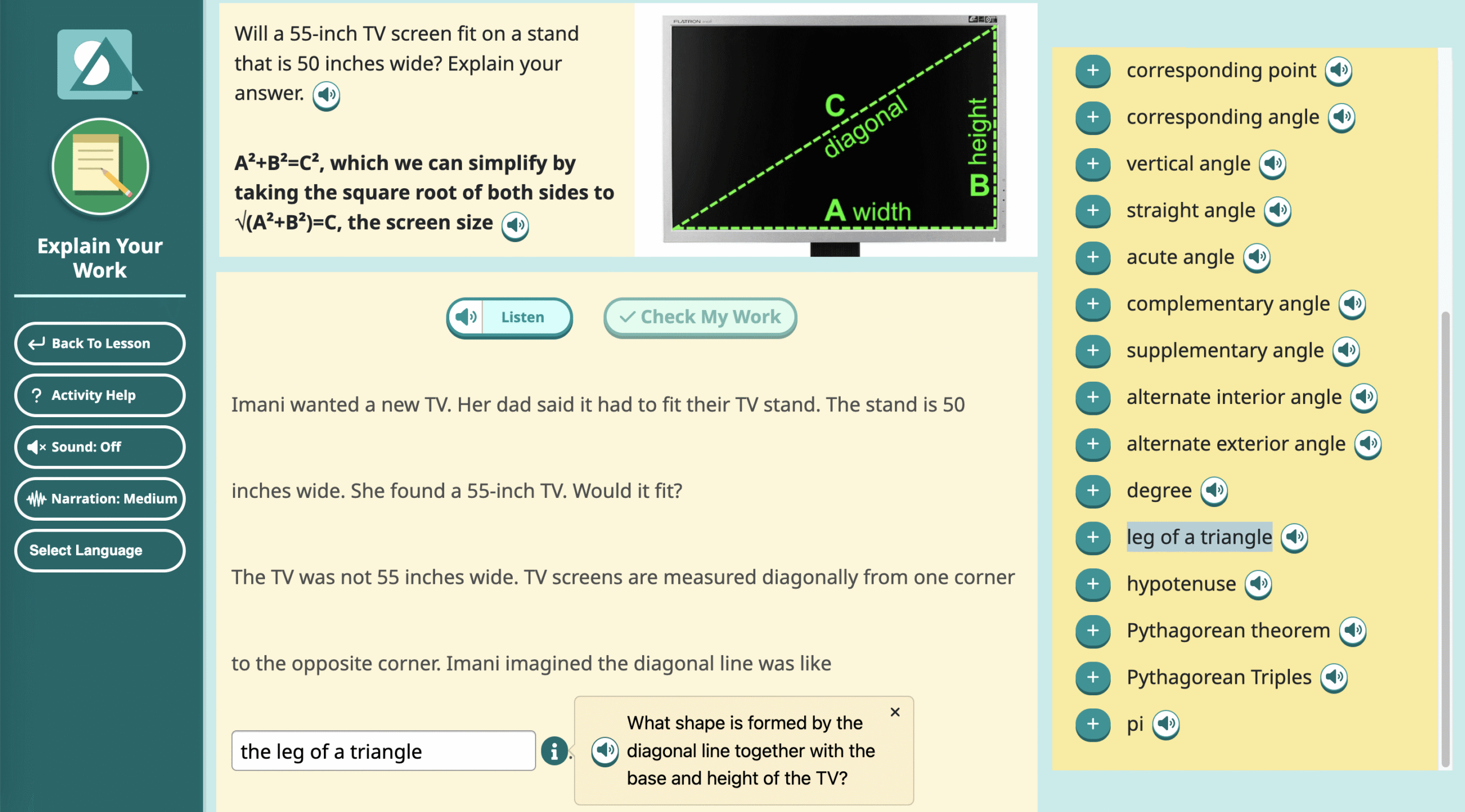
MP3: Construct viable arguments and critique reasoning.
Speak Agent’s “Sort It Out” analysis activity, shown in the image below, challenges learners to carefully evaluate math facts or evidence. They use the activity to categorize facts or evidence—or to determine whether they support or do not support a logical argument.
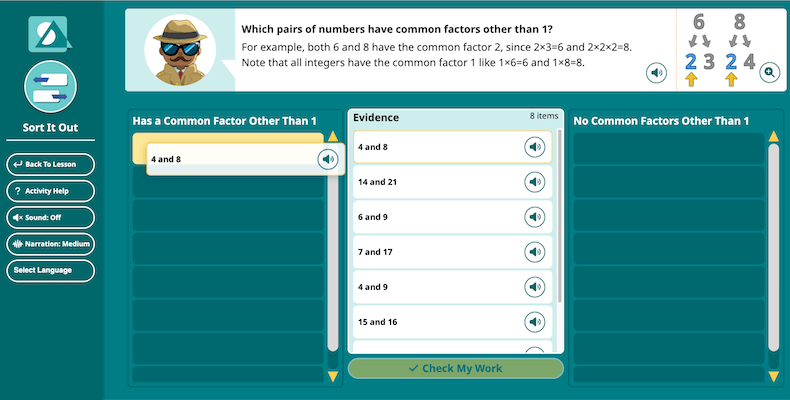
MP4: Model with mathematics.
Speak Agent’s “Math Problem Maker” problem-writing activity guides students through an inquiry-driven math modeling process. Students begin by asking mathematical questions, defining a topic, and gathering information needed to answer a chosen question. Then they formulate a word problem or puzzle and map out the solution steps for their own problem. At each step there are contextual writing scaffolds. Once a problem or puzzle is drafted, students review their work using a simple rubric and, with teacher approval, it’s ready for classmates to solve!
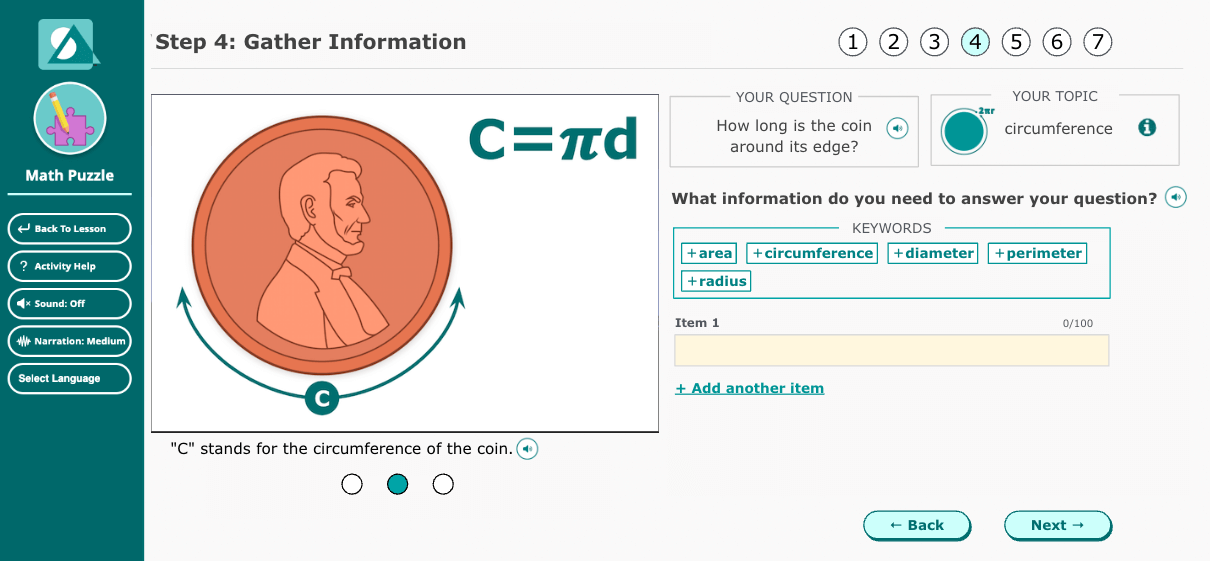
Find more examples in our Guide to Language in the Math Practices.
Ready to Talk?
 Please schedule a chat with our leading educational consultant, Mr. Michael Huckaby:
Please schedule a chat with our leading educational consultant, Mr. Michael Huckaby:




